Today I want to share a small set of images I took of Leibniz University Hannover. To be more precise, these pictures all show the university’s main building, the historic Welfenschloss (Welf castle). Hardly any report, flyer or website of the university that comes along without a photograph of this icon. So I had to have a try at this building myself.
Before I’ll get to my subject, let me ask a question: What is the “perfect photograph”? I know, I know – this is a debate probably as old as photography itself. Tough matter. Personally, I believe formal criteria and aspects can help to get on track, but in the end the less tangible factors are decisive. How can I as a viewer connect with the image? Which emotions, connotations and memories the image does evoke in me? Will I bear this image in mind? Or will I forget it soon?
This being said, I’m on a quest to create my personal perfect photograph of the mentioned Welf castle. The place itself carries a personal meaning for me: I studied at Leibniz University Hannover, and I continue to work there. In good and bad, kinda. For a certain period of time, I have now been applying my private interest in architectural photography to the symbol of my professional life. I consider this quest as an arrangement I have made with myself.
A Brief Introduction to the Leibniz University Hannover Headquarters
Built from 1857 onwards, the castle should serve as a summer residence for the king’s family. However, the Kingdom of Hannover lost its autonomy in the Austro-Prussian War in 1866, becoming a Prussian province. Because King Georg V. had to leave, the Welfs never moved in. After ten years of vacancy, they eventually rebuilt the castle to accommodate the royal technical university in 1879. This institution would later become Leibniz University Hannover.
During World War II, the parts of Welf castle were severely damaged. Four of the five prominent towers lost their spire. Furthermore, the chapel had to be demolished. Despite the devastation, the overall appearance of the castle remained roughly the same.
My Attempts to get THE Shot
Within this series, the main subject – the castle’s front – doesn’t change. On the contrary, conditions and the equipment used vary greatly.
On most occasions, I came early in the morning. There is less activity – especially on the weekends – and the pre-sunrise light possesses a special quality. Unfortunately, I often had to deal with setbacks. E. g., an unexpected cloud layer rolled in, turning a potentially beautiful daybreak into a dull, grey morning. The other day, some delivery trucks were parking right in front of the building’s entrance. Or the scaffolding of recent construction works had appeared, covering parts of the roof. I call them “Mhmm, maybe another time but I’ll take an image anyway”-type of moments.
In terms of equipment, I’ll just give you a short list of numbers:
- four different cameras with a total of six lenses
- two film formats, 35mm and 120 (with two different aspect ratios for the latter)
- and seven different film stocks (mostly color, but also black-and-white)
Leibniz University Hannover in Images
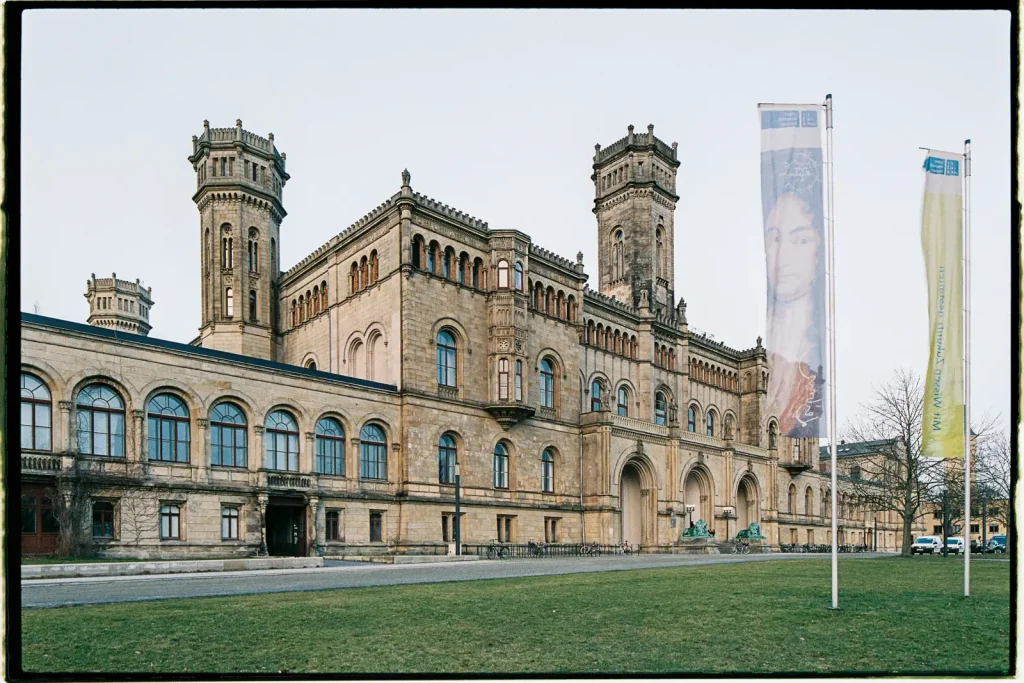
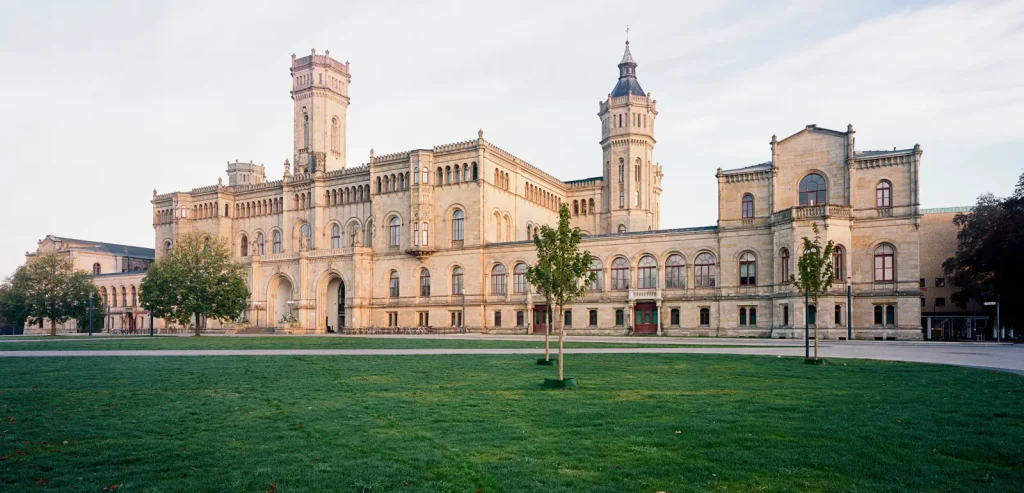
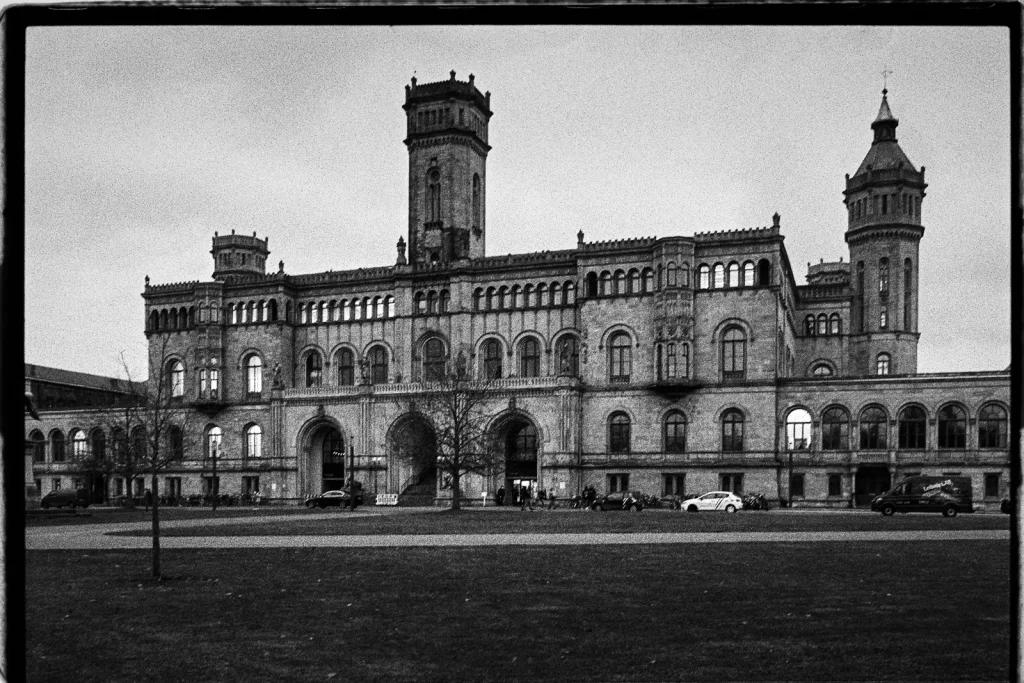
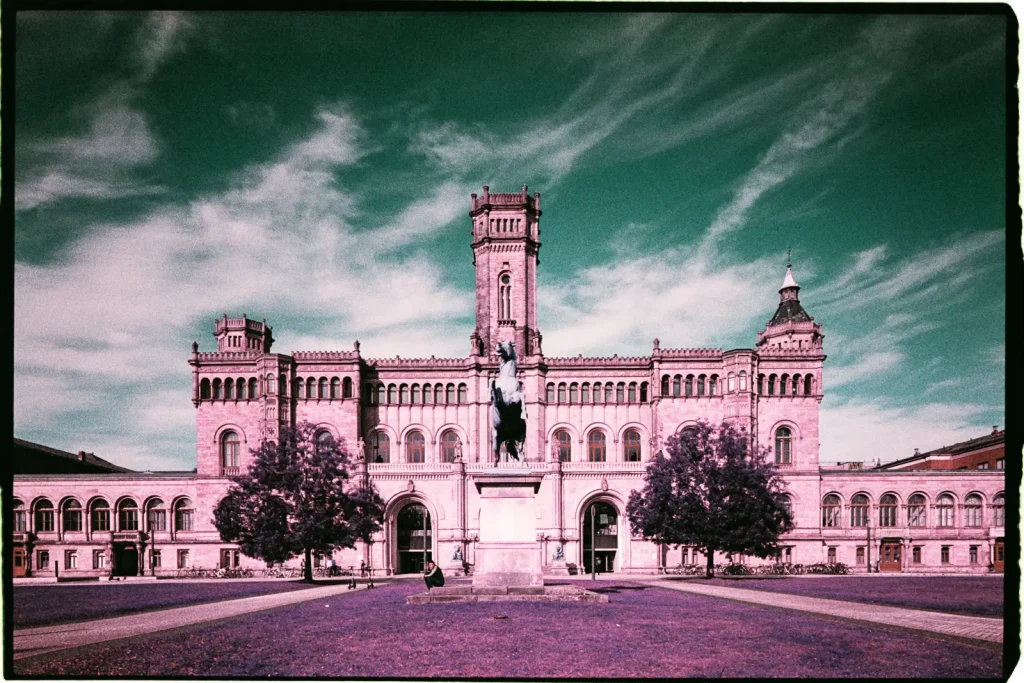
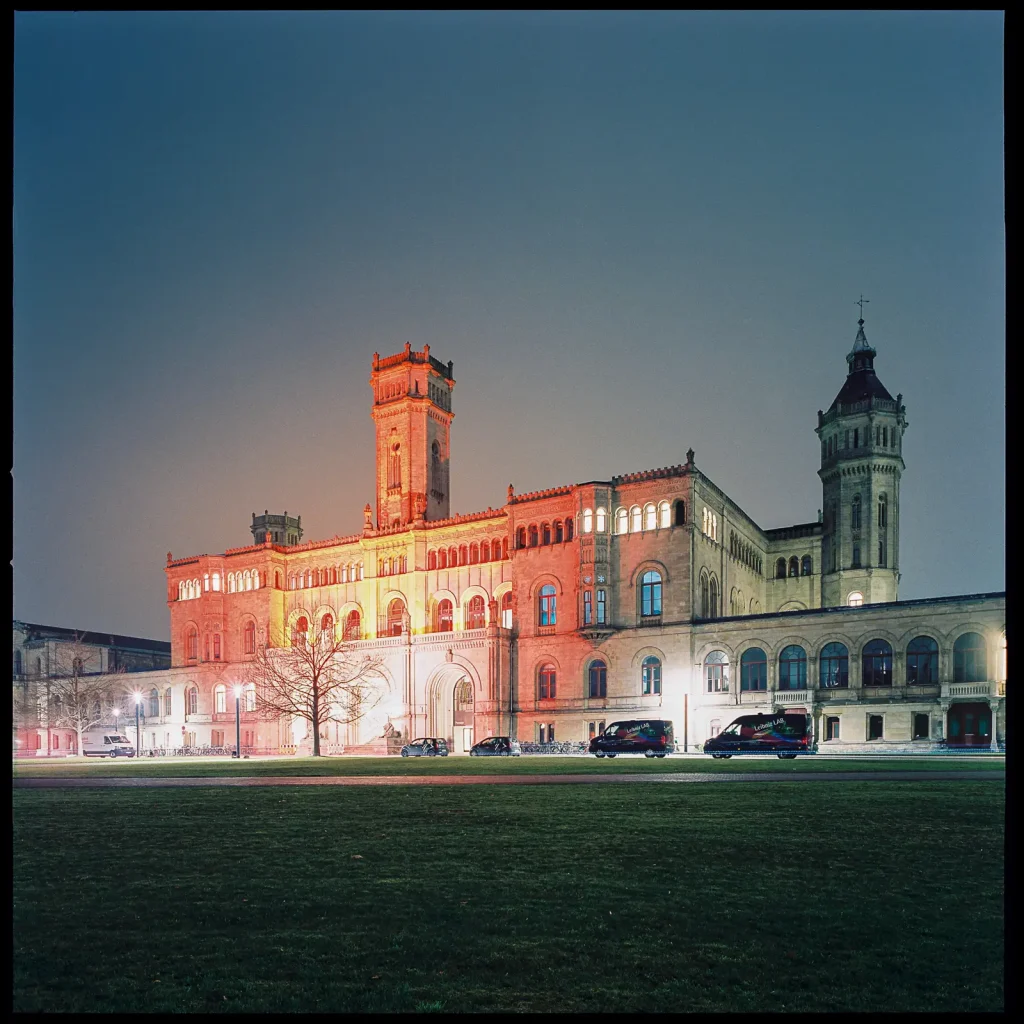
Closing Thoughts
Am I satisfied now, have I succeed in taking my personal perfect photograph of Leibniz University Hannover’s icon? Well, the answer is a clear “I don’t know”. My preferences constantly fluctuate – one day I am a fan of bold colors, the other one I prefer pastel shades or the gritty look of a black-and-white photograph. I like the images I have taken so far, nevertheless I haven’t reached the point of closure for this quest yet. Maybe this project serves rather as a coping strategy than it is about a singular result. Or, in nicer and more familiar words: It’s all about the process.
Thanks for stopping by!
Share this post:
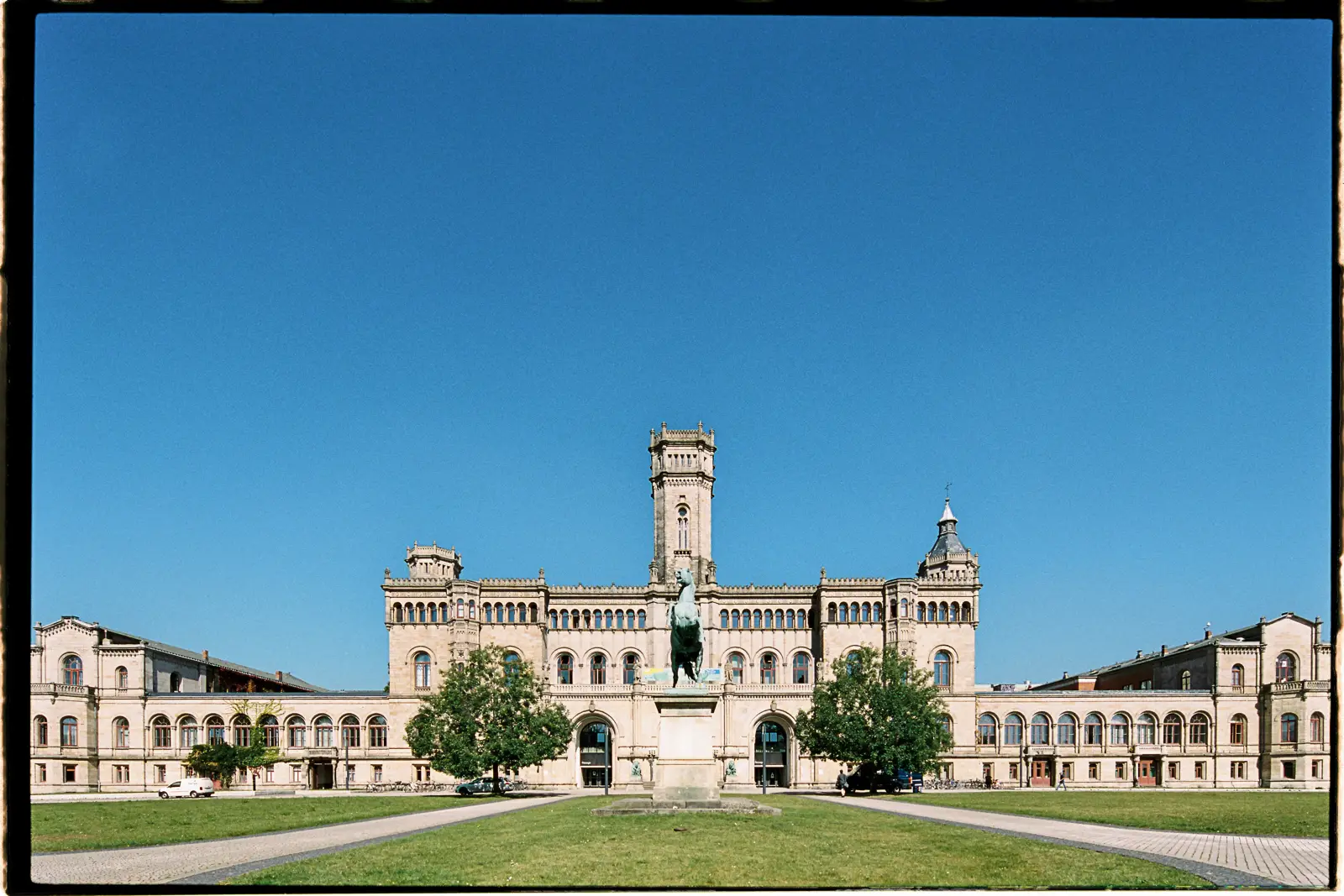

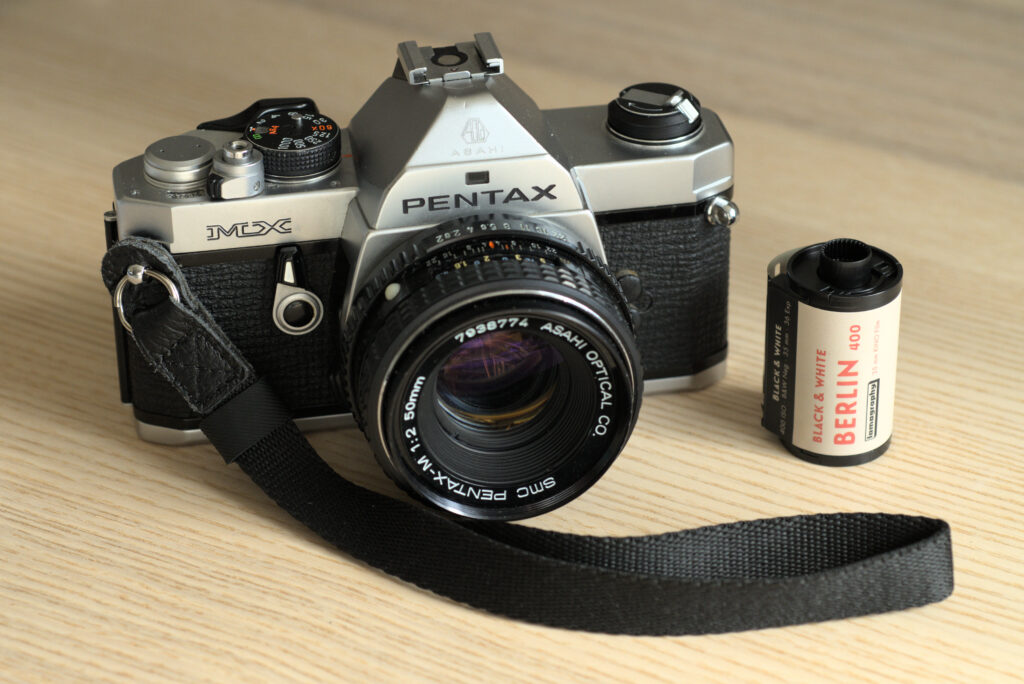
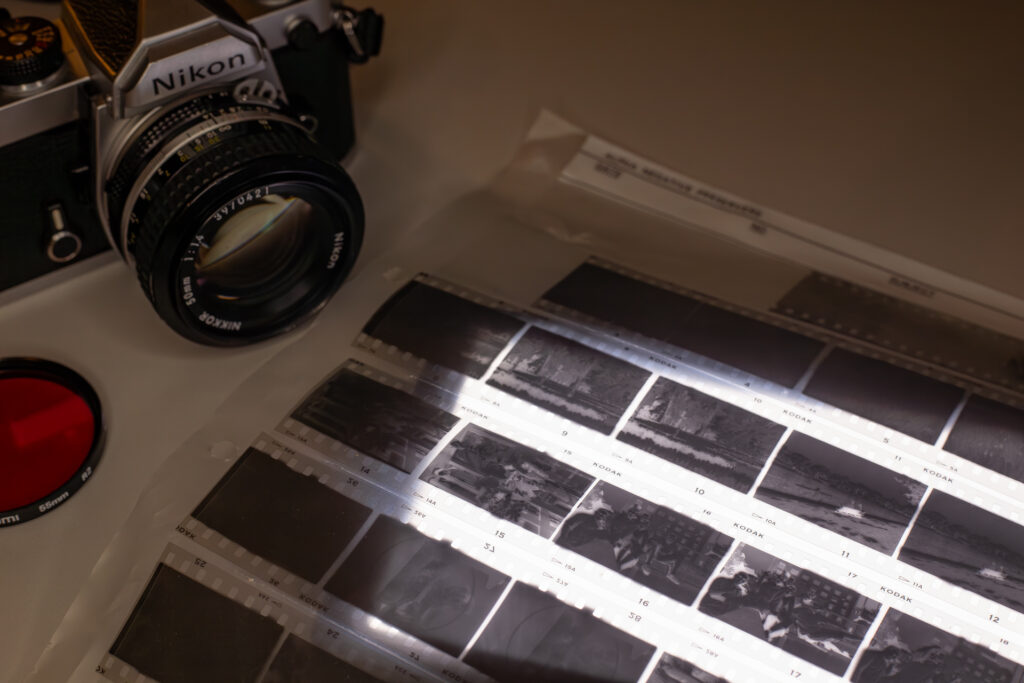
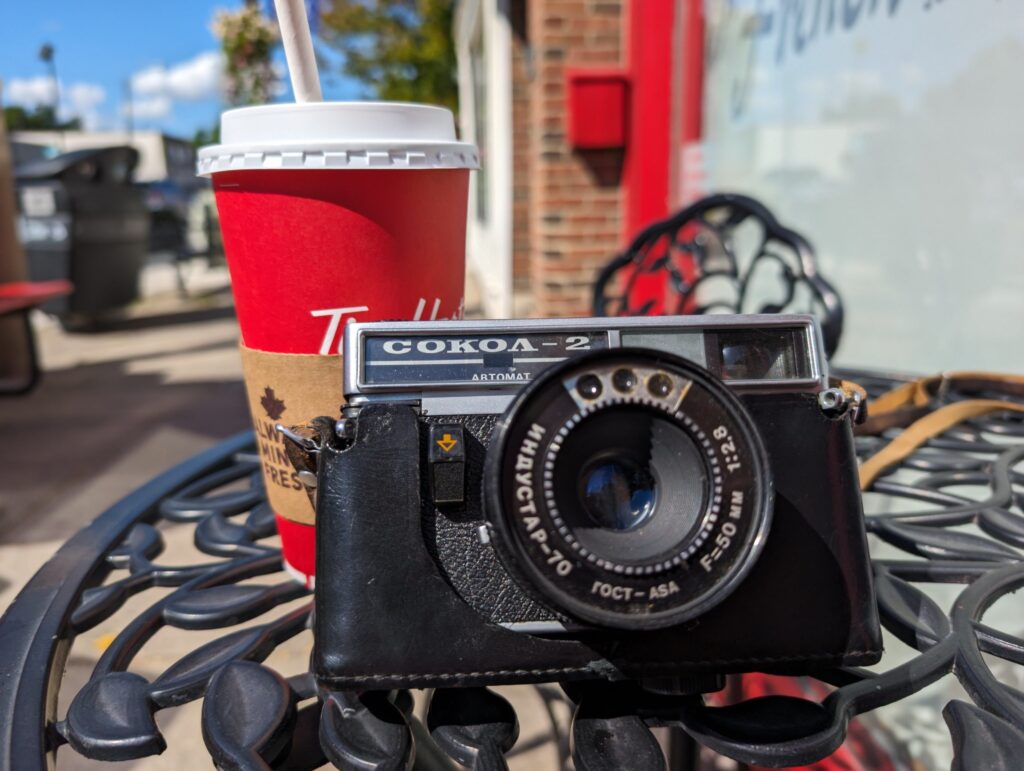




Comments
Thorsten Wulff on 6 Frames of Leibniz University Hannover – by Christian Schroeder
Comment posted: 13/01/2022
Comment posted: 13/01/2022
Zoltán Árva-Tóth on 6 Frames of Leibniz University Hannover – by Christian Schroeder
Comment posted: 13/01/2022
Comment posted: 13/01/2022
Terry B on 6 Frames of Leibniz University Hannover – by Christian Schroeder
Comment posted: 13/01/2022
As I progressed through your article I kept wondering if I'd see a shot with your ArcBox. And you kept me waiting until the final image!
But the image that fascinates me the most is that shot with the Leicaflex SL2 and 35mm. This is a combination I also have.
During my one and only visit to West Berlin, 1968, (and, yes, I did the almost obligatory coach tour into the eastern zone which in those days seemed quite an adventure!)) I pruchased a little booklet entitled "Berlin, wie ist früher war" and which was filled with architectural images taken in the decades before WWII. All were in black and white, but what fascinated me was how much your image fitted in with these, both in style and technical presentation. I believe it was for this reason that without being told what the building was or its location, I immediately could see it was Germanic.
Comment posted: 13/01/2022
Stefan Wilde on 6 Frames of Leibniz University Hannover – by Christian Schroeder
Comment posted: 14/01/2022
thanks for your posting! When pursuing the perfect shot I believe that it must catch the essence of what a photographer has to say about the subject. Thinking about my own relation to my work place (though that is mostly home office) there would be multiple aspects, practical, emotional, professional and social and all these can be broken down into further aspects of their own... For me and my work place, there would not be the one perfect shot, it would always have to be a series or a whole book. With that in mind and for my personal preference, I like the combination of all your pictures more than any individual one
Greetings from Hamburg!
Comment posted: 14/01/2022
Stefan Wilde on 6 Frames of Leibniz University Hannover – by Christian Schroeder
Comment posted: 16/01/2022